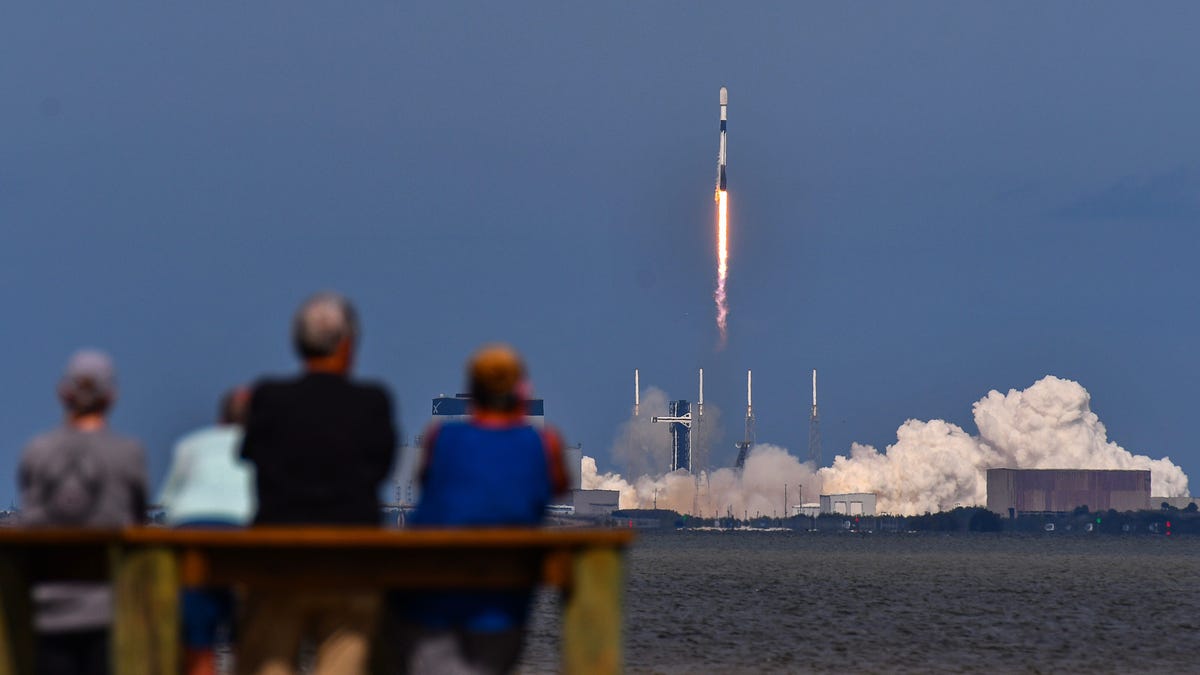Mexico may file suit against Elon Musk over SpaceX Starship explosions
Mexico’s president signals lawsuit against the SpaceX CEO may be coming if pollution, marine-life die-off is found after repeated Starship explosions
- The Florida Institute of Technology withdrew from a study with Cape Canaveral on the impact of rocket launches, citing insufficient funding and scope.
- Florida Tech estimated a more comprehensive study would cost $100,000 or more.
- A larger study is being conducted in California involving the Space Force, universities, FAA, SpaceX and NASA.
Citing insufficient pricing and scope of research, the Florida Institute of Technology has withdrawn from a partnership with the city of Cape Canaveral to monitor potential impacts of rocket launches on buildings and infrastructure.
This $10,019 study, which the Cape Canaveral City Council approved in April, called for Florida Tech to install sensors — including sound level meters, accelerometers and air quality monitors — at a handful of buildings across Cape Canaveral and collect data before, during and after rocket launches.
But upon further review, Florida Tech withdrew because “the $10,000 cost and narrow purview are insufficient to appropriately examine the issues at hand,” university spokesperson Wes Sumner said.
Specifically, Sumer said a more robust study using more sensors in more locations — including weather sensors — would better address the complexities at play.
“Florida Tech initially estimates that cost for an appropriately detailed study could be $100,000 or more. The ongoing work from faculty at (Brigham Young University) into the acoustics of rockets, for example, which has produced multiple journal articles, alludes to the broader effort needed for more meaningful, impactful data,” Sumner said in an email.
Why study rocket launch acoustics? In a news post, City Hall staffers said Cape Canaveral residents are concerned about the possibility of long-term structural damages such as cracking, foundation settling and shattered windows — particularly in light of increasing launch rates and rocket sizes. Florida’s Space Coast remains on track to crack the 100-launch barrier for this first time this year.
“The City’s goal in pursuing this research was to determine the long-term impacts on the built environment of repeated rocket launches with ever more powerful launch vehicles, and we still wish to accomplish this,” Zachary Eichholz, chief resilience manager for the city of Cape Canaveral, said in an email.
“It is currently exploring alternative means to conduct this research, including future initiatives with FIT and other research teams at other universities,” Eichholz said.
Last week, U.S. Air Force officials collected environmental comments during public hearings in Titusville, Cape Canaveral and Cocoa about SpaceX’s proposal to start launching up to 76 Starship-Super Heavy rocket systems per year — with up to 152 sonic-boom-producing landings — at Cape Canaveral Space Force Station.
Those Starship-Super Heavy future liftoffs from Launch Complex 37 would occur 9 miles from Cape Canaveral’s closest condominium and 10.4 miles from City Hall, Eichholz said. SpaceX did not respond to messages seeking comment for this story.
Space Force, SpaceX, NASA conducting bigger study in CA
In terms of scope, a far-larger research collaboration is tracking rocket sonic-boom data this year near Vandenberg Space Force Base in California. This study involves the Space Force, BYU, California State University-Bakersfield, SpaceX, NASA and the Federal Aviation Administration.
A network of about 25 monitoring stations is dispatched across 500 square miles of California’s central coast, collecting data to create a three-dimensional sound map.
“It’s like trying to catch lightning in a bottle,” Kent Gee, who chairs BYU’s Department of Physics and Astronomy, said in a Space Force press release. “All launches generate sonic booms; however, their audibility to the public is influenced by several factors, including the launch trajectory, the size of the rocket, and atmospheric conditions.”
Specifically, the California coastal region’s multiple “microclimates” add to the complexities, and Gee said launches with nearly identical flight paths can produce vastly different noise levels on the ground. The press release said this variability “has sent researchers on a quest to unravel the complex interplay between rocket trajectories, weather conditions, and topography.”
Air Force shares Starship-Super Heavy sound details
An Air Force 176-page draft environmental impact statement said Starship-Super Heavy noise would represent “a community annoyance” for residential neighborhoods in Cocoa Beach, Cape Canaveral, Titusville and Merritt Island — particularly during Super Heavy booster landings.
During last week’s public hearings, mention was made of SpaceX’s proposed actions to reduce noise impacts using sound suppression technology:
- A water deluge system would spray large volumes of water onto the launch pad during liftoff, absorbing acoustic energy and converting it to steam — significantly reducing sound intensity.
- Flame trenches beneath the launch pad would redirect and disperse exhaust and sound energy away from sensitive areas.
In addition, SpaceX will coordinate with Space Launch Delta 45 to alert the public in advance of launches and potential sonic booms via websites and social media.
If a sonic boom causes suspected property damage, Air Force meeting materials said building owners could launch a formal claims process by contacting the Space Launch Delta 45 public affairs office. Compensation would be provided in accordance with FAA regulations, the Commercial Space Launch Act and other relevant law and policy.
For the latest news from Cape Canaveral Space Force Station and NASA’s Kennedy Space Center, visit floridatoday.com/space. Another easy way: Click here to sign up for our weekly Space newsletter.
Rick Neale is a Space Reporter at FLORIDA TODAY. Contact Neale at Rneale@floridatoday.com. Twitter/X: @RickNeale1
